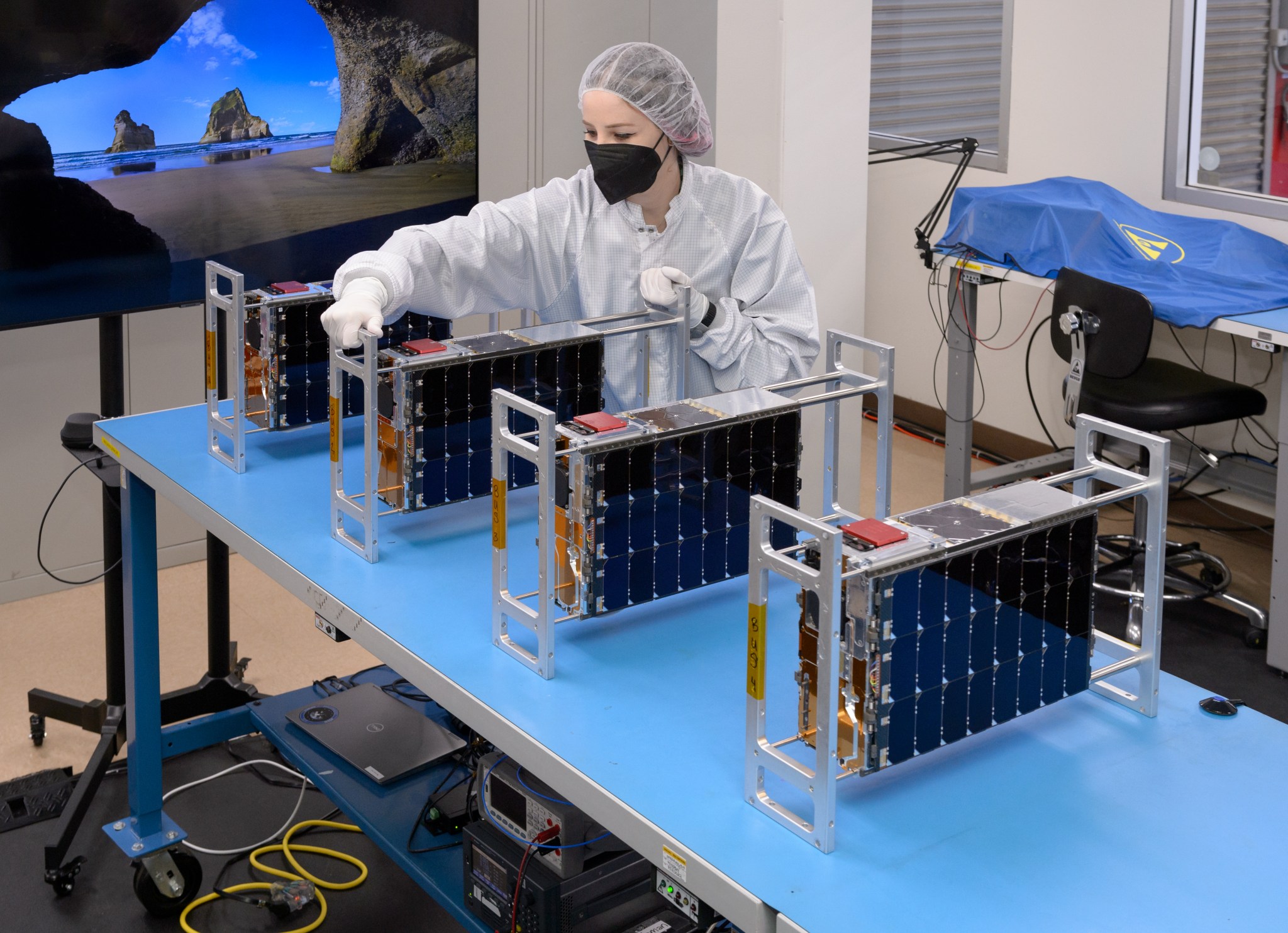
Eight U.S. university teams are partnering with NASA to advance technologies for small spacecraft, increasing their capability to support the agency’s science and exploration missions within the Earth, cislunar, and deep space domains.
The University SmallSat Technology Partnerships (USTP) initiative within NASA’s Small Spacecraft Technology (SST) program selected the eight teams from proposals received in response to the program’s 2023 USTP solicitation.
NASA is focused on enabling small missions to continue supporting sustained lunar presence, promoting next generation mission architectures for scientific discovery, and stimulating space commerce. At the present time, small spacecraft, or SmallSats, primarily operate in low Earth orbit. Through these collaborative partnerships, technology advancements will expand the potential of SmallSats as they extend their capabilities to more complex Earth, lunar, and deep space science and exploration missions.
SmallSats are expected to support increasingly important and complex functions and through partnerships with industry and academia, their utility will continue to advance. Improvements in SmallSat capability will enable them to support and perform science and deep space exploration, provide space situational awareness and national security-oriented capabilities, and expand the range of services available to people on Earth for greater economic growth and societal benefit.
The following university teams were selected by the USTP initiative to mature new systems and capabilities, with support from a NASA center of their choice. The projects focus on one of three technology topic areas listed below to enhance SmallSat potential.
Topic 1: Earth- and Global Navigation Satellite System-Independent Position Navigation and Timing for Small Spacecraft
- Georgia Institute of Technology, in collaboration with NASA’s Johnson Space Center in Houston “An Autonomous Optical Navigation Instrument for Deep Space Exploration”
- University Of Minnesota, in collaboration with NASA’s Ames Research Center in California’s Silicon Valley “Deep Space PNT Instrument (DESPINA)”
- California Institute of Technology, in collaboration with NASA’s Jet Propulsion Laboratory in Southern California “Ultrastable microphotonic clocks for a Cislunar small spacecraft”
Topic 2: Edge Computing and Machine-Learning Architectures, Software, Platforms, and Devices for Small Spacecraft
- California State Polytechnic University Pomona, in collaboration with JPL “SCALES: Spacecraft Compartmentalized Autonomous Learning and Edge-computing System”
- Utah State University, in collaboration with NASA’s Marshall Space Flight Center in Huntsville, Alabama “Low-power Array for CubeSat Edge Computing Architecture, Algorithms and Applications”
- University Of Michigan, Ann Arbor, in collaboration with JPL “SmallSat Steward: Autonomous Online Learning and Planning for Safe Inspection of Cislunar Stations”
Topic 3: High Specific Power Systems and Thermal Control for Small Spacecraft
- Pennsylvania State University, in collaboration with NASA’s Glenn Research Center in Cleveland “Passive thermally deployed shape-memory alloy heat-pipe radiators for high-intensity small spacecraft”
- University of Dayton, in collaboration with NASA’s Goddard Space Flight Center in Greenbelt, Maryland “Passively Deployed Radial Radiator for Transfer and Rejection of CubeSat Waste Heat”
The SST program office is based at NASA Ames and within the agency’s Space Technology Mission Directorate at NASA Headquarters in Washington.
For more information on USTP initiative and previous awards, visit:
For news media:
Members of the news media interested in covering this topic should reach out to the NASA Ames newsroom.


























